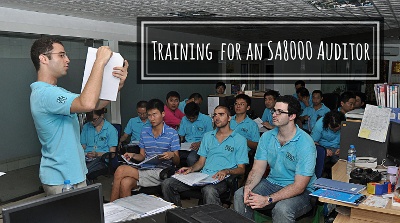 As a buyer that’s looking out for the best interests of their brand, you’re might be aware of the consequences that labor violations such as forced or child labor can have on your bottom line. Just this week, Nestlé found hazardous and exploitative working conditions for many of the migrant workers at their seafood suppliers in Thailand.
As a buyer that’s looking out for the best interests of their brand, you’re might be aware of the consequences that labor violations such as forced or child labor can have on your bottom line. Just this week, Nestlé found hazardous and exploitative working conditions for many of the migrant workers at their seafood suppliers in Thailand.
The company’s own report of “forced labor, trafficking and child labor” shows Nestlé at least bothered to audit their own suppliers. But some may be wondering how the brand came to use these suppliers to begin with. There’s little doubt that the findings of this report are likely to hurt Nestlé’s public image.
So what can you do to protect your business from the negative consequences of working with suppliers that are not socially complaint?
Simple. Audit your suppliers for social compliance.
One of the more commonly held and internationally recognized standards for social compliance is the SA8000. The SA8000 standard has requirements related to forced labor, child labor, health & safety and many others violations that are similar to those of major brands and retailers. If you want to investigate your own suppliers, basic training for SA8000 is an effective way to learn what kinds of violations you should look out for.
"One of the more commonly held and internationally recognized standards for social compliance is the SA8000."Focus areas of training for social compliance auditing
Though training for social compliance auditing has different focus areas, there are similar courses to intro duce auditors to the following areas:
duce auditors to the following areas:
- Social responsibility and compliance in a global supply chain.
- Practical knowledge of social compliance auditing and performance.
- Elements of the auditing framework.
- Application of auditing methods to collect, review and evaluate data.
- Interpretation of the findings and generation of appropriate conclusions based on the audit body and framework.
- Review of common auditing problems and the ability to search for possible solutions.
Basic training course for an SA8000 audit
The course for SA8000 basic certification is typically offered at a number of locations around the world at least once a month. Fees for taking the course can range from just over $1,000 to nearly $2,000, depending on location.
"The course for SA8000 basic certification is typically offered at a number of locations around the world."Since SA8000 is one of the more mainstream standards used for social compliance auditing, let’s walk through the content of the basic training course for an SA8000 audit.
The SA8000 basic training course typically needs five days to complete and educates auditors on the following topics:
- Social accountability
- International, national and local laws
- Human rights; and
- Health & safety
An outline of the training schedule is as follows:
| SA8000 Basic Training Course Schedule | |
| Day 1 | |
| 1. Social accountability context: labor standards and corporate responsibility | |
| 2. Social accountability context: codes of conduct and multi stakeholder approach | |
| 3. Overview of the standard | |
| 4. Introduction of the management system approach | |
| 5. Overview of national and international legal context | |
| Day 2 | |
| 1. Audit process of SA8000 | |
| 2. Planning and preparation for an audit | |
| 3. The process of conducting an audit | |
| 4. Approach to audit and communication | |
| 5. Collecting evidence | |
| Day 3 | |
| 1. Audit requirements: child labor, forced and compulsory labor | |
| 2. Audit requirements: health and safety | |
| 3. Audit requirements: freedom of association and the right to collective bargaining | |
| Day 4 | |
| 1. Audit requirements: discrimination and disciplinary practices | |
| 2. SA8000 requirements: working hours and remuneration | |
| Day 5 | |
| 1. Audit requirements: management system | |
| 2. Open Q&A | |
| 3. Examination |
Basic certification for SA8000 auditors
At the end of the five-day course, your auditor will need to take an exam to become certified in basic SA8000. A score of 75 percent of higher is considered a passing grade. If an auditor fails the test the first time, they have an opportunity to retake it online.
"If an auditor fails the SA8000 certification exam the first time, they have an opportunity to retake it online."Auditors that achieve a passing score on the certification exam typically receive a digital copy of their certificate by email within four weeks of completion of the course. Although SA8000 certification does not expire, it’s suggested that auditors attend a new course whenever a revised version of the SA8000 standard is introduced.
Conclusion
If you’re importing from a supplier overseas it can be difficult to find transparency. Certification in the SA8000 standard can go a long way in showing you what’s really going on in the factories that manufacture your products. A social compliance audit helps provide assurance that you’re not working with a supplier that could put you out of business.
If you’re concerned about meeting the compliance standards of a particular brand or retailer, be sure to check out How to Use Retailer Standards for Social Compliance.







